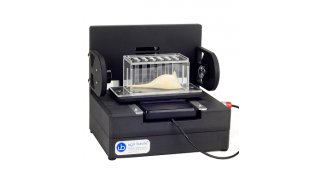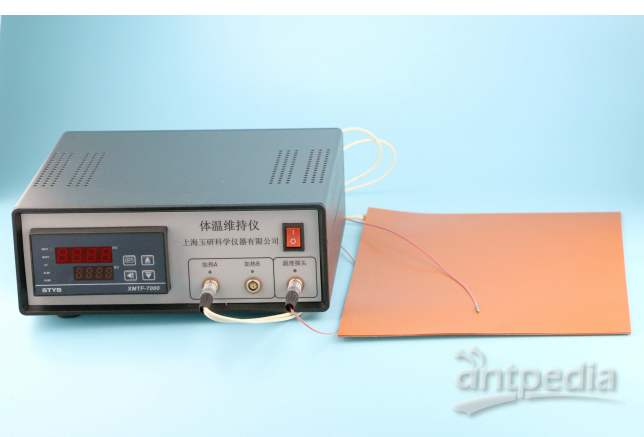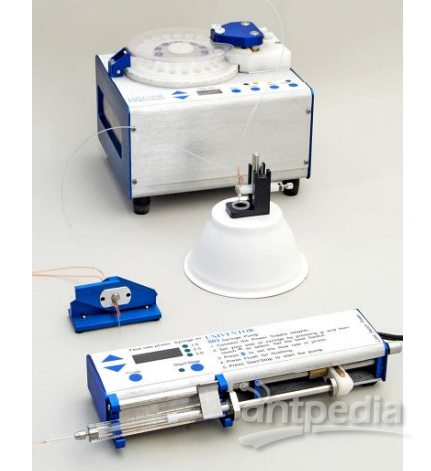Role of nicotinic acetylcholine receptors in the regulation of apoptosis

Nicotinic acetylcholine receptors are essential for neuromuscular signaling and are also expressed in non-neuronal tissues, where their function is less clear. Although nicotinic acetylcholine receptors are primarily known for their action as ligand-gated ion channels transducing action potentials across synapses, they may have other actions. Nicotinic acetylcholine receptors in neurons alter apoptotic signaling, protecting against cell death in some settings, and this action may in some cases be directed through alternative signaling pathways. In neurons the alpha-7 nicotinic receptor activates PI3 kinase through a src-family kinase, activating the anti-apoptotic kinase AKT (See “AKT signaling pathway”). One pathway involved in AKT signaling involves phosphorylation of the forkhead transcription factor FKHRL1, causing its retention in the cytoplasm associated with 14-3-3, and blocking expression of the apoptotic fas protein. The PI3 kinase/AKT pathway protects a broad range of neurons against apoptotic cell death and may block apoptosis triggered by beta-amyloid fragments that contributes to the progression of Alzheimer’s disease. If so, nicotinic agents may prove useful in the treatment of this and other neurodegenerative conditions. There are several proteins that modulate the response of nicotinic acetylcholine receptors, include synapse formation. Prior to synapse formation, nicotinic receptors are randomly dispersed in the post-synaptic membrane. A neuronal protein, agrin, binds to the Musk receptor in the muscle membrane, stimulating clustering of nicotinic receptors and synapse formation. Rapsyn is present at high levels at synapses with nicotinic receptors, bringing them together at high densities and anchoring clustered receptors to the cytoskeleton. Members of the Src family of tyrosine kinases also play a role in clustering caused by Rapsyn, phosphorylating the nicotinic receptors, rapsyn, and other targets. Nicotinic receptors expressed in non-neuronal tissues may also be involved in the response to smoking. In lung epithelial cells, nicotine from cigarette smoke blocks apoptosis by activating the anti-apoptotic kinase AKT, contributing perhaps to carcinogenesis and resistance to chemotherapy. Activation of nicotinic acetylcholine receptors in dermal fibroblasts may contribute to the altered wound healing and skin elasticity related to smoking. Activation of keratinocyte nicotinic receptors may also alter the properties of skin.
Contributor:
REFERENCES: Arredondo J, Hall LL, Ndoye A, Nguyen VT, Chernyavsky AI, Bercovich D, Orr-Urtreger A, Beaudet AL, Grando SA. Central Role of Fibroblast alpha3 Nicotinic Acetylcholine Receptor in Mediating Cutaneous Effects of Nicotine. Lab Invest 2003 Feb;83(2):207-25 Arredondo J, Nguyen VT, Chernyavsky AI, Bercovich D, Orr-Urtreger A, Kummer W, Lips K, Vetter DE, Grando SA. Central role of alpha7 nicotinic receptor in differentiation of the stratified squamous epithelium. J Cell Biol 2002 Oct 28;159(2):325-36 Kihara T, Shimohama S, Sawada H, Honda K, Nakamizo T, Shibasaki H, Kume T, Akaike A. alpha 7 nicotinic receptor transduces signals to phosphatidylinositol 3-kinase to block A beta-amyloid-induced neurotoxicity. J Biol Chem 2001 Apr 27;276(17):13541-6 Mohamed AS, Swope SL. Phosphorylation and cytoskeletal anchoring of the acetylcholine receptor by Src class protein-tyrosine kinases. Activation by rapsyn. J Biol Chem 1999 Jul 16;274(29):20529-39 West KA, Brognard J, Clark AS, Linnoila IR, Yang X, Swain SM, Harris C, Belinsky S, Dennis PA. Rapid Akt activation by nicotine and a tobacco carcinogen modulates the phenotype of normal human airway epithelial cells. J Clin Invest 2003 Jan;111(1):81-90




















